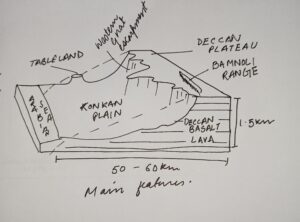Roadmap for Answer Writing 1. Introduction: Brief Overview: Start with a short description of the Himalayas (location, geographical importance, and significance as a region). Climate Change Overview: Mention the role of climate change in influencing ecosystems and how it is particularly affecting mountain ...
Human-Wildlife conflict is the interaction between people and wildlife that results in negative impacts for human or wildlife populations wherever wildlife and people coexist and share limited resources. Causes: 1. As human populations expand into wild animal habitats, natural wildlife territory isRead more
Human-Wildlife conflict is the interaction between people and wildlife that results in negative impacts for human or wildlife populations wherever wildlife and people coexist and share limited resources.
Causes:
1. As human populations expand into wild animal
habitats, natural wildlife territory is
displaced.
2. Reduction in the availability of natural prey
or food sources leads to wild animals seeking
alternate sources.
3. Alternately, new resources created by humans
draw wildlife resulting in conflict.
4. The population density of wildlife and humans
increase with overlaps in geographical
areas increasing their interaction thus
resulting in increased physical conflict.
5. Byproducts of human existence offer un-
natural opportunities for wildlife in the
form of food and sheltered interference and
potentially destructive threat for both man
and animals.
Outcomes of Conflict
1. Injury and loss of life of humans and
wildlife [10]
2. Crop damage, livestock depredation, predation
of managed wildlife stock.
3. Damage to human property.
4. Trophic cascades.
5. Destruction of habitat.
6. Collapse of wildlife populations and
reduction of geographic ranges.
Dealing with conflict
Dealing with conflict requires formation of multiple partnerships. A strong forest department presence is needed that collaborates with other departments such as railways, police and the district collectors. For instance, people are often attacked by sloth bears when they go out to defecate in the open during early morning hours or when they are moving around in low light conditions.



 Volcanic eruptions, tectonic uplifts as well as long term erosions are some of the factors that have shaped Deccan Plateau presently with its elevated terrain, deep river valleys and fertile soils.
Volcanic eruptions, tectonic uplifts as well as long term erosions are some of the factors that have shaped Deccan Plateau presently with its elevated terrain, deep river valleys and fertile soils.
Model Answer Physiological Changes: Rapid De-glaciation: Rising temperatures in the Himalayas are accelerating the melt of glaciers, leading to Glacial Lake Outburst Floods (GLOFs). Over 70% of the 700 recorded GLOF events since 1883 have occurred in the past 50 years (ICIMOD). This poses a significRead more
Model Answer
Physiological Changes:
Impact on Himalayan Biodiversity:
Conclusion:
Climate change is causing significant physiological and ecological changes in the Himalayas. To address this, the Indian government has implemented programs like the National Mission on Sustaining the Himalayan Ecosystem and the Indian Himalaya Climate Adaptation Programme (IHCAP). Further investment in research, sustainable practices, and international collaboration is essential to mitigate these impacts.
See less